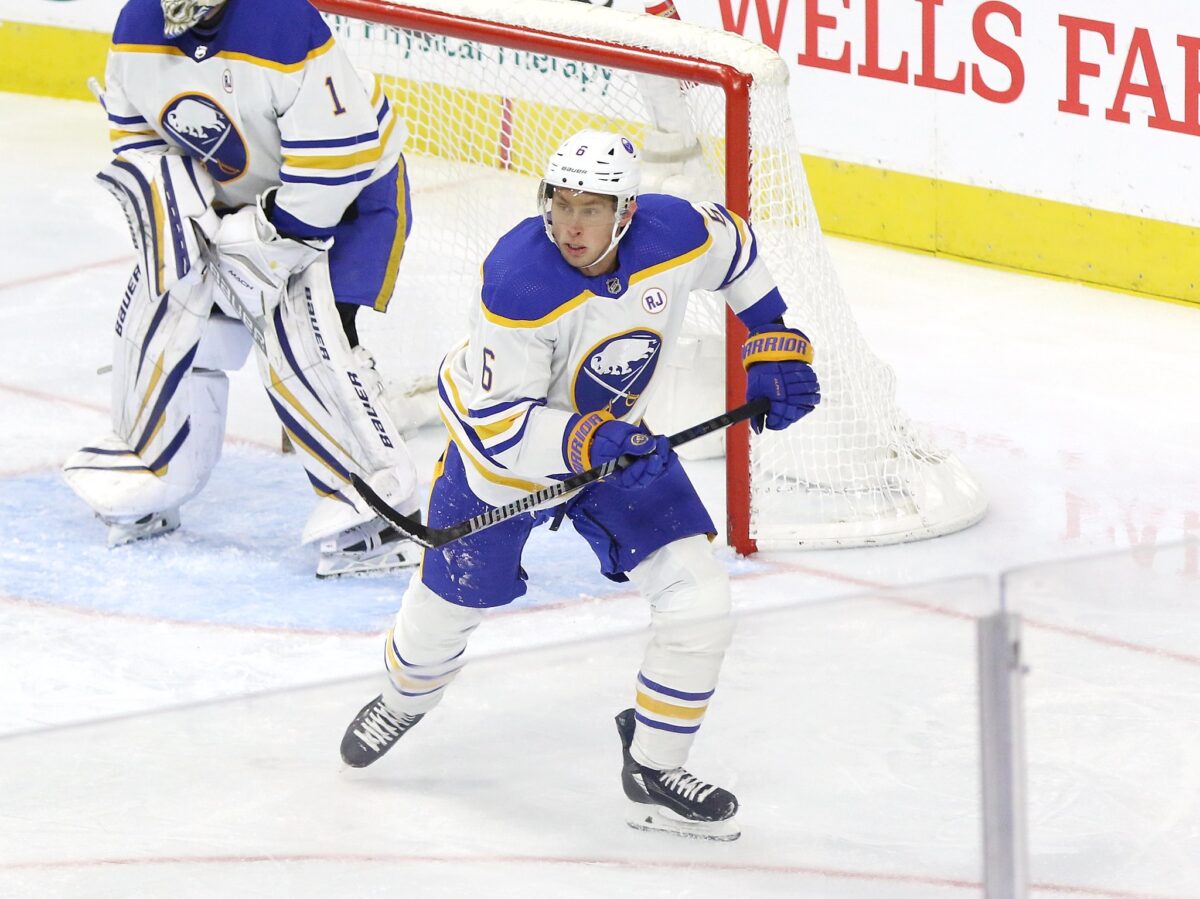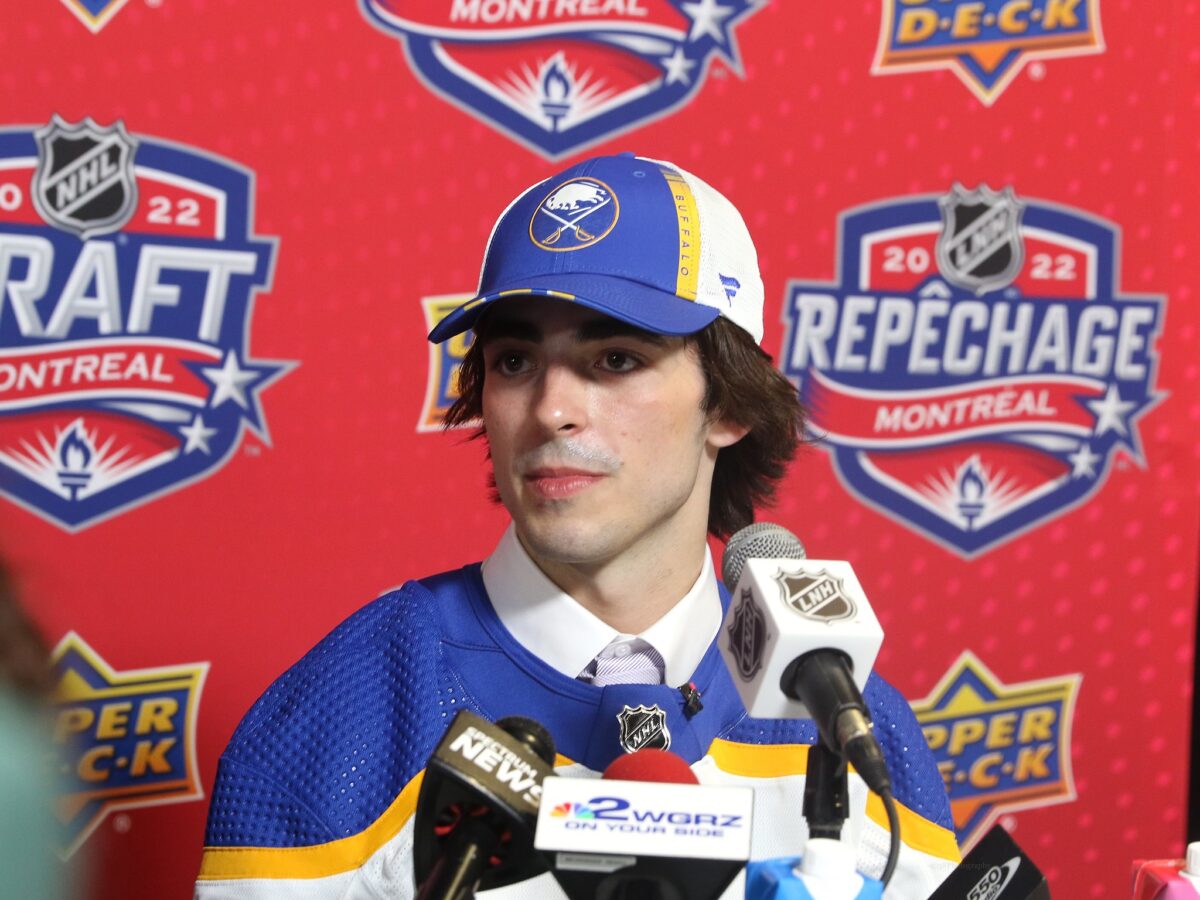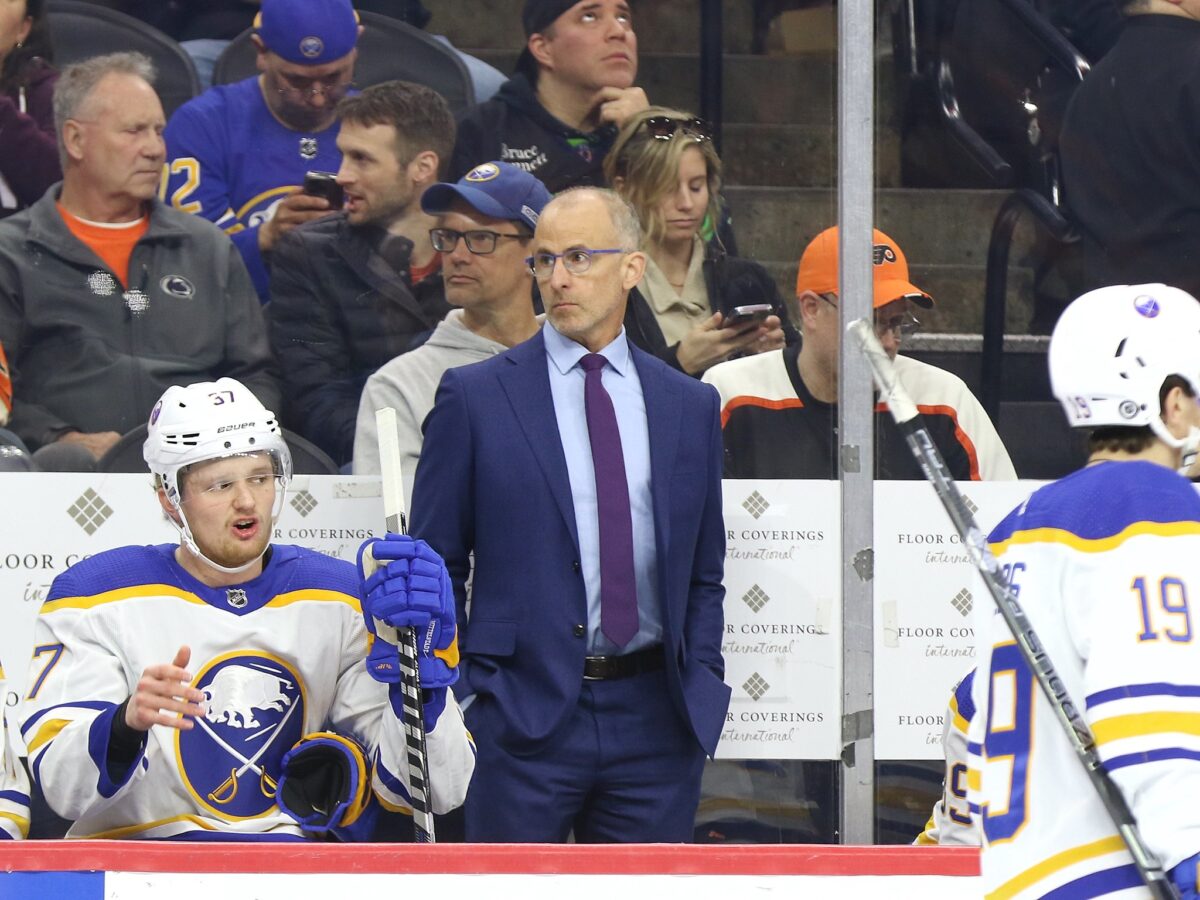On average, 76.7 percent of teams in a playoff spot come Thanksgiving remain in a playoff spot in the spring. Two weeks later, the Sabres find themselves five points back of a wild card spot with the second most games played of any Eastern Conference team. Not only that, but the team’s underlying statistics and special teams show no indication of this record being a fluke.
Fans can point out that there have been too many injuries to have a successful season, but the fact is that even when everyone was healthy, the team was underperforming. In fact, outside of Casey Mittelstadt, JJ Peterka, and arguably Rasmus Dahlin, practically everyone on the roster has been underperforming. At some point, it’s time to start looking inward, and when the results simply have not been there despite the bulk of the roster and coaching staff remaining unchanged, the blame must be put on general manager Kevyn Adams.
Offseason “Additions” Have Not Worked
Outside of trading for Jordan Greenway, who I must admit has been a phenomenal addition to the Sabres, Adams’ moves since the end of last season have been simply detrimental to the team’s success. In particular, the defensive additions have been atrocious. Erik Johnson and Connor Clifton have, without a doubt, been the worst two defensemen to put on a Sabres uniform this season. They were both brought in to provide veteran leadership and sturdy play in their own zone, and while I can’t speak for the former, the defense simply has not been there.
Clifton, who is signed at $3.33 million annually until 2025-26, is the worst of all Sabres’ defensemen in terms of expected goals against per 60 minutes (xGA/60), with the opposition projecting to score 3.18 times per 60 minutes with him on the ice. In total, he has an expected goals share (xGF%) of 41.15 percent, meaning that the oppositions control nearly 60 percent of the expected goals when Clifton is on the ice. On top of his horrid underlying stats, Clifton has been, without a doubt, the most undisciplined Sabre this year. Past his two-game suspension for a high hit on New Jersey Devils’ captain Nico Hischier, he leads the team in penalties per 60 minutes with 1.94 and PIM per 60 minutes (5.62).

Moving to Johnson, the results are somehow worse. His xGA/60 is slightly better than Clifton’s at 2.94, which is good for second-worst on the team. But his xGF% is an appalling 40.43 percent, which tells me that despite the slightly better defensive metrics, he’s such a black hole on offense that he’s overall more of a net negative than Clifton is. Thankfully, Johnson is only signed for this year, so the Sabres will hopefully move on from him come next year.
Related: Sabres’ Defense Needs to Be Smarter With its Aggressiveness
Then, there are some of the smaller moves that Adams made in the off-season that simply haven’t worked. For one, extending Tyson Jost was a mistake. The forward has been a healthy scratch for several games this season, and for good reason. He’s been the worst regular forward in terms of xGF% with a 41.71 percent xG share, and despite some limited success defensively, the forward has struggled to produce much of anything on the other side of the ice.
Lack of Meaningful Forward Call-Ups
With so many injuries to the Sabres’ forward corps, one would think there would be some good looks at the Sabres’ pipeline. After all, players like Matthew Savoie and Jiri Kulich are talented enough to be in the NHL now, right? Isak Rosen has been a part of the lineup for the better part of two weeks, but he’s probably the least talented of the three names mentioned here, and the on-ice results reflect that. Pointless in six games, Rosen holds a 5-on-5 xGF% of an incredibly low 31.69 percent. Kulich, on the other hand, boasts an xGF% of 50.12 percent, and though Savoie played just 3:55 in his one game, he held an xGF% of over 80 percent. I’m not sure what Adams sees in Rosen that he doesn’t see in one of those two.

The other forward call-ups haven’t really worked out, either. Sure, Brandon Biro scored twice, but his underlying statistics were abysmal and suggest his success was luck-driven. Lukas Rousek was also an unsuccessful endeavor, though he was sent back to Rochester after five games of sub-40 percent xGF% hockey. Not all the blame in terms of these prospects is on Adams — Savoie’s less-than-four-minutes of deployment falls squarely on head coach Don Granato. Past that, though, the decisions on who to call up get made by the GM, and none have been successful outside of Ryan Johnson this season.
Coaching Changes Must Be Made
Don Granato has been subject to much ridicule, and it’s easy to see why. Between his questionable deployment, use of goaltenders, and overall lack of willingness to adapt, it’s possible that he’s just not the right fit for the team anymore. Say what you will about his success last year, but the team looks completely different year, and I can’t help but assume it has a lot to do with the coaching. Bruce Boudreau, a proven commodity in player development, sits unsigned to any team. Jay Woodcroft was recently let go by the Edmonton Oilers and has had an incredible amount of success in his career (from ‘Hard feelings: “It’s bullsh*t that Jay Woodcroft was fired when he was,” NHL insider speaks out,’ Edmonton Journal, Nov. 16, 2023). At this point in time, something has to give, and it might be time to move on to a different coach.
Then there’s the case for new special teams coaches. The Sabres’ power play ranks 25th in the league, operating at just a 15.8 percent capacity. With all this offensive talent, even despite the injuries, it’s been an inexplicably and inexcusably poor performance from the man advantage. The players look stagnant and easily allow aggressive defenders to clear the puck or outright gain possession of it. In fact, the Sabres are giving up the third most xGA/60 on the power play, with only the Colorado Avalanche and Pittsburgh Penguins giving up more expected goals on their own power plays. Again, something’s got to give, and changing power play systems is almost certainly the best move.

Entering this season, something on Adams’ agenda to fix was the penalty kill. He attempted to do some work on it by acquiring Clifton and Johnson, but as I said earlier, those two haven’t been adequate at even strength, and their play on the penalty kill is much of the same. Another potential area of improvement was the system, which falls on the special teams coach. It was their kryptonite last season, and despite the very early success that they have had, their penalty kill has fallen from top-five to 11th in the league. It might be time for a coaching change there too.
Is the Sabres’ Season Fixable?
It’s still relatively early into the season, and the Sabres were in a similar spot in the standings last year around this time as well. The difference there is that the Sabres were scoring a ton of goals, whereas the team this year has struggled mightily on both sides of the ice. Thus far into the season, they’re allowing the 11th most goals against per game in the NHL while scoring the seventh least. It’s not a combination for success, and their general lack of competent goaltending doesn’t allow them any room for error if they want to win games.
Still, being that it’s only a quarter of the way through the season, there’s more than enough time to right the ship. With a couple of moves to improve the scoring depth and perhaps a shakeup on the coaching staff, I would still be confident in saying that there’s a chance for the Sabres to make the playoffs in a division that’s struggled more than anticipated in the early goings of the 2023-24 season.
